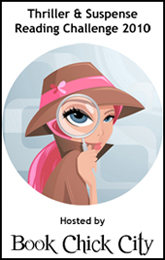Reading for the Green Minded
A person over the course of their lifetime can accumulate a ton of books. I know I’ve got way more than I need. Some I dearly love, and some I hold on to because there are bits of information within them that I’d like to hang on to. As a reviewer, I get a ton of books. Ethics codes say these can’t be sold, so that leaves finding other venues for them when you run out of room for them. What do you do though with the books that you’ve decided to let go of. Just toss them in the garbage, or give them a new life. What about those books, you want to read, but aren’t sure you want to dedicate that precious shelf space to. I hope to present a lot of alternatives to you.
Let’s begin with one of the newest ways to love books, yet remain green. The electronic reader. There are many different e-reader devices out there now, more to come. I’ll cover the biggest and most widely used.
Kindle – Available from Amazon.Com – Actually available in the Kindle 2 or Kindle DX. The Kindle DX is a larger, more expensive, more powerful version of the Kindle. The Kindle holds about 1500 books, while the Kindle DX holds 3,500. The Kindle DX has a larger screen than the Kindle. The DX is priced about $200 more than the Kindle. The DX is available with U.S. and Global wireless, while the Kindle seems to come with Global wireless. The Kindle will accept Amazon e-books and convert PDF’s, while the DX will accept PDF documents as they are.
Nook – Available from Barnes & Noble – The Nook is 7.7 inches high by 4.9 inches wide, 1/2 inch thick, and weighs about 12 ounces. Roughly the size of a paperback book. It holds the contest of 1,500 books, and will take a microSD card to expand the number of books available. Books are available via a free 3G wireless network as well as free wi-fi in all Barnes and Noble stores. It also holds about 26 hours worth of audio for your audiobooks. Battery life is about 10 days without recharging, but use of wi-fi/3G will lower that.
Sony E-Reader – Available from a variety of retail outlets. Sony has two versions of their e-reader. The lowest priced is the Sony Pocket E-Reader at around $199. The other is the touch screen, and retails for about $259. This is probably one of the most popular choices, next to the Kindle.
One of the biggest drawbacks right now it seems is each device is proprietary. Sony has their format for e-books, Amazon has theirs, Nook has theirs. Some will take many formats such as PDF, others not as many. From my perspective, I’m holding off. In doing my reviews, an e-reader would come in handy for many reasons. For one, I’d clear out a lot of shelf space by upgrading to electronic copies of some of my books. Secondly, I’d be able to accept some books for review faster, and if I see a new book that I want to read, I can get it within a matter of seconds. Also, there’s the factor that it would be better for the environment. However, I’d like a device that allows me to take notes on the book as I’m reading it. Some of them do have limited note taking ability. If you decide to purchase one though, the best advice is to try each of them out. Don’t be so eager to jump on the bandwagon, that you just buy one, because it’s an emerging technology and I think eventually, like MP3 players, at some point you can find e-readers priced for everyone. So if you are shopping for one, what are some things to look for:
E-Ink Display – This gives you a display very much like the printing on a book. This type of display is much better I’ve read on the eyes, than an LCD display.
Storage Content – Will 1,500 book capacity be enough, or will you need more. If you don’t think that’ll be enough, make sure it’s expandable.
Battery Life – You don’t want to be on a 5 hour plane trip, and have it run out of juice on you 2 hours into the flight.
Hidden costs – Are there costs to access the wireless networks?
Book Availability – How many books are available for this device? What formats does it accept?
But wait, you say, I don’t want e-books, I love the feeling of curling up with a physical book. I like the feeling of turning the pages. I can’t get that from an e-reader. But what do I do with the books that I’ve read, but don’t really want to keep around permanently. Well, I’m glad you asked. There are many ways and places you can recycle those books.
You can send your used textbooks (I know I still have a ton) to Books Beyond Borders. Their purpose is to provide educational and reading opportunities to underpriviledged countries.
You could check with your local library. Some will take your books and have library books sales as a fundraiser. A Great way to support your local libraries, which today, sadly, are mostly underfunded.
Friends of Libraries, USA – Their purpose is to help rebuild libraries in areas hit by hurricane’s, earthquakes, etc.
At Freecycle.org you can list your ads for free and give your books or anything else away!
A fun way to recycle a book is through Bookcrossing.com – The idea behind this site, is that you leave a book in a public place, then post it. Someone else goes and picks it up. You can find books others have left, and track the ones you left.
Housingworks.org – They work to end homelessness and AIDS in NYC. Books can be mailed [126 Crosby Street, NYC 10012 (212-334-3324)] or dropped off.
PaperbackSwap.com At this website, you mail your books in, and get credits for them. You then use those credits to get other books you want to read.
BooksThroughBars.org This site provides books to prisoners. You do need to check though and make sure you send the types of books a particular prison allows.
Some other places to donate are homeless shelters, local schools, and hospitals. Over at For the love of books they have a discussion of this very topic. Some of their commentors can give you ideas on things in specific areas of the country such as NY, or Florida.
For books that are too damaged to pass off to anyone else, you can always go to paper recycling centers. However, from what I’ve read, you need to rip the hardovers off books, since they can’t be used, and just leave the paper content.
I hope this gives you some ideas on recycling/reusing books. What ways do you know of, or can you think of to make use of books you no longer want?
You can discuss it here or join my facebook page and discuss it there.





 Like
Like